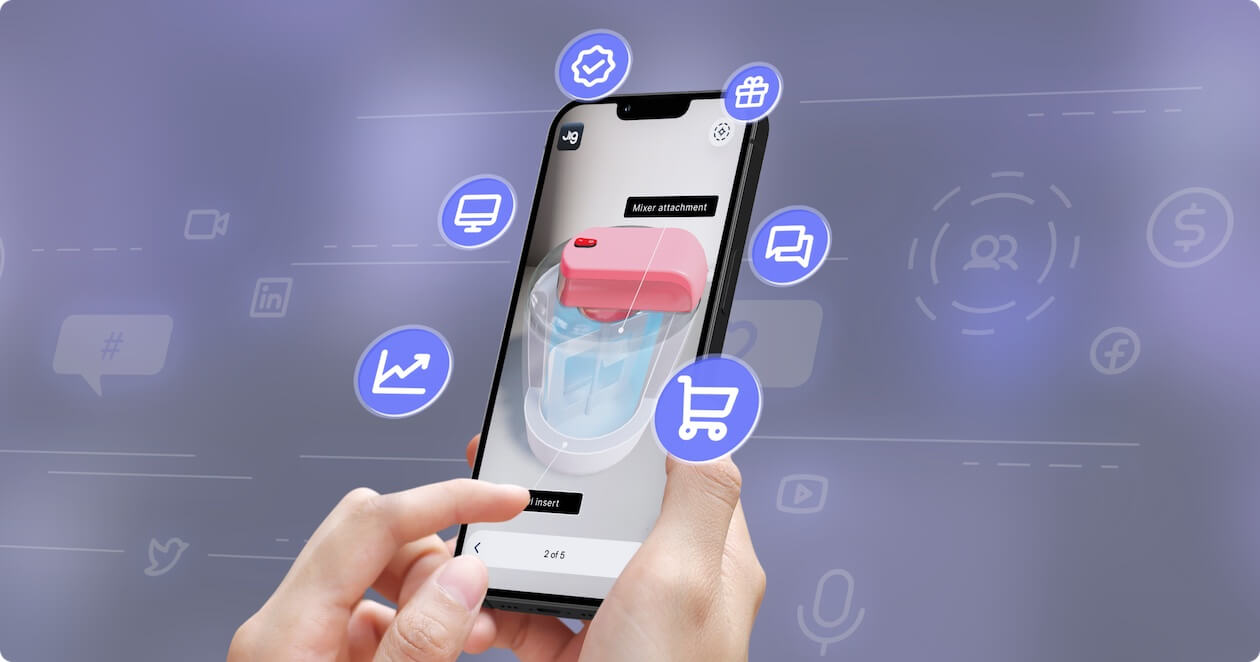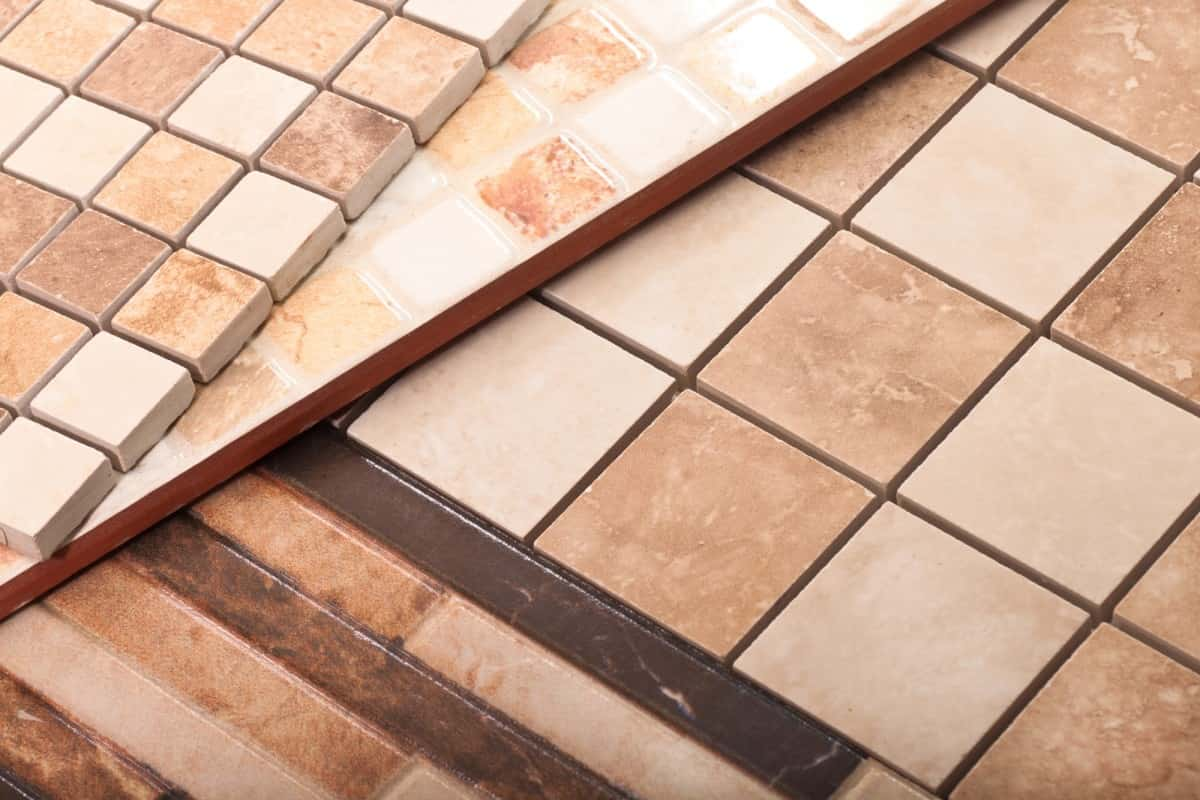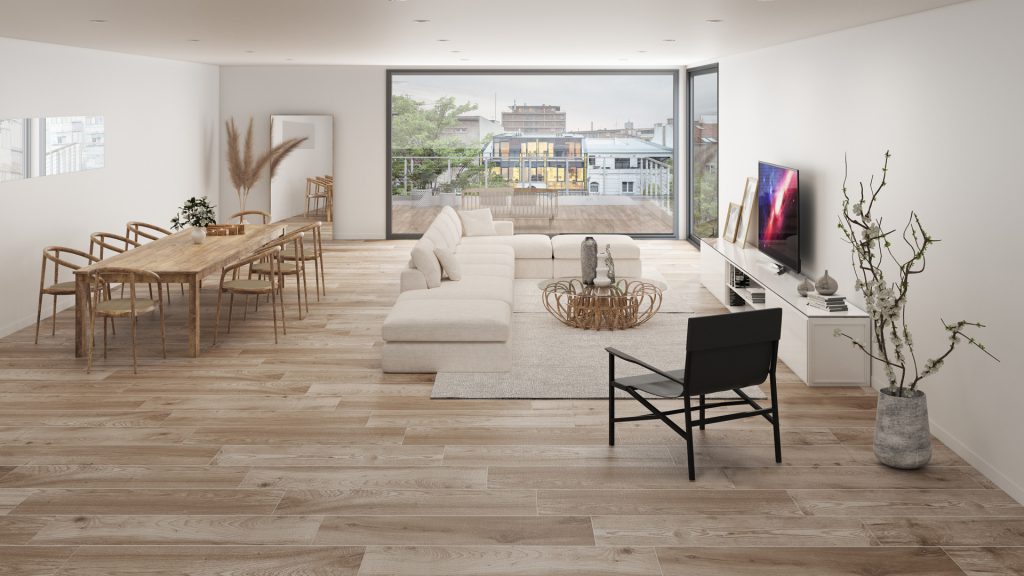Marketing Strategies for Tile and Ceramic Brands in the Digital Age: The Role of Social Media and Augmented Reality in Sales
In an era where technology shapes nearly every aspect of our lives, the way people shop for home improvement products like tiles and ceramics has undergone a seismic shift. No longer confined to flipping through catalogs or wandering showroom floors, today’s consumers turn to their screens—smartphones, tablets, and laptops—to explore, compare, and purchase. For tile and ceramic brands, this transformation presents both a challenge and an opportunity. How can these businesses stand out in a crowded digital marketplace? The answer lies in innovative marketing strategies that harness the power of the digital age, with social media and augmented reality (AR) emerging as game-changers in driving sales.

This article dives deep into the world of digital marketing for tile and ceramic brands, exploring how social media builds brand awareness and fosters customer connection, while augmented reality transforms the buying experience into something interactive and personal. Whether you’re a business owner, marketer, or simply curious about the intersection of technology and commerce, you’ll discover actionable insights, real-world examples, and creative ideas to boost sales in this evolving landscape. By the end, you’ll see why embracing these tools isn’t just an option—it’s a necessity for thriving in the digital age.
Understanding the Digital Landscape for Tile and Ceramic Brands
The rise of the internet has rewritten the rules of consumer behavior, and tile and ceramic brands are no exception. To craft effective marketing strategies, it’s crucial to first understand how the digital age has reshaped the way people shop for these products.
The Shift to Online Decision-Making
Picture this: a homeowner planning a kitchen renovation sits at their dining table, scrolling through Pinterest for inspiration. Within minutes, they’ve pinned a dozen tile designs, visited a brand’s website, and watched a quick Instagram reel showcasing a ceramic installation. This scenario is increasingly common. A (hypothetical) industry report suggests that 70% of tile and ceramic purchases now involve some form of online research before a final decision is made. This shift underscores a vital truth: if your brand isn’t visible online, you’re missing out on a massive chunk of potential customers.
The digital age has empowered consumers with information and choice. They no longer rely solely on in-store displays or salesperson recommendations. Instead, they seek inspiration, reviews, and visuals—all at their fingertips. For tile and ceramic brands, this means a strong digital presence isn’t just nice to have; it’s essential for survival.
Why Tiles and Ceramics Thrive in a Digital World
Tiles and ceramics are visual, tactile products, which might make you wonder: can they really succeed in a digital space? The answer is a resounding yes. Online platforms allow brands to showcase their collections in ways physical stores can’t—through high-resolution images, 360-degree views, and even virtual mockups of finished spaces. This capability aligns perfectly with the needs of modern consumers, who crave convenience and confidence in their purchases.
Moreover, the digital age has leveled the playing field. Small brands can compete with industry giants by leveraging cost-effective tools like social media and augmented reality, reaching audiences far beyond their local markets. But to do so effectively, they must understand how to use these tools to meet customer expectations and drive sales.
The Numbers Don’t Lie
Let’s add some perspective with (hypothetical) data: an e-commerce study found that 60% of consumers prefer brands with an active online presence, while 45% say they’re more likely to buy from a company that offers digital tools like AR previews. These figures highlight the growing importance of digital marketing for tile and ceramic brands looking to capture today’s tech-savvy shoppers.
Leveraging Social Media for Brand Awareness and Engagement
Few tools have revolutionized marketing as profoundly as social media. For tile and ceramic brands, platforms like Instagram, Pinterest, TikTok, and Facebook offer unparalleled opportunities to connect with customers, build a recognizable identity, and ultimately boost sales.
The Visual Advantage of Social Media
Tiles and ceramics are all about aesthetics—color, texture, pattern—and social media thrives on visuals. Platforms like Instagram and Pinterest are tailor-made for showcasing these products. A single well-composed photo of a sleek ceramic backsplash or a bold tile floor can inspire thousands of potential buyers. Add a short video showing the installation process or a before-and-after transformation, and you’ve got a recipe for engagement.
Consider a (hypothetical) brand, “TileTrendz,” which saw its follower count skyrocket after posting a series of Reels featuring quick tile-laying tips. Within three months, their online sales jumped by 35%, proving that compelling content can translate directly into revenue. The key? High-quality visuals paired with a consistent posting schedule.
Building a Community Around Your Brand
Social media isn’t just about broadcasting—it’s about conversation. Tile and ceramic brands can use these platforms to engage directly with their audience. Responding to comments, hosting Q&A sessions, or running polls (e.g., “Which tile color suits your dream bathroom?”) fosters a sense of community and trust.
Take another fictional example: “CeramicGlow” launched a campaign encouraging customers to share photos of their renovated spaces using the hashtag #CeramicGlowMakeover. The best entries won a gift card, and the brand repurposed the submissions as testimonials across their channels. The result? A 50% increase in engagement and a flood of organic promotion from happy customers.

Tips for Social Media Success
To maximize impact, brands should:
- Post Regularly: Aim for 3–5 posts per week to stay top-of-mind.
- Use Hashtags Strategically: Tags like #TileInspiration or #CeramicDesign can expand your reach.
- Collaborate with Influencers: Partner with interior designers or home décor bloggers to tap into their audiences.
- Experiment with Formats: Try carousel posts, Stories, or live sessions to see what resonates most.
Real-World Inspiration
Look at (fictional) “MosaicMasters,” a brand that turned TikTok into a goldmine. By posting 15-second clips of mosaic tile art coming to life, they gained 100,000 followers in six months and saw a 40% spike in website traffic. Their secret? Understanding their platform’s audience—young, creative, and eager for quick, eye-catching content.
By leveraging social media, tile and ceramic brands can turn casual scrollers into loyal customers, laying the foundation for long-term sales growth.
Augmented Reality: Revolutionizing the Customer Experience
While social media excels at raising awareness, augmented reality (AR) takes the next step by transforming how customers interact with tile and ceramic products. This cutting-edge technology is redefining the buying process in the digital age.
What is Augmented Reality?
Simply put, augmented reality overlays digital elements onto the real world, typically through a smartphone or tablet. For tile and ceramic brands, AR allows customers to “see” how a product would look in their own home before committing to a purchase. It’s like a virtual try-before-you-buy experience.
Imagine pointing your phone at your bathroom wall and watching as different tile patterns appear, perfectly scaled and aligned. This isn’t science fiction—it’s a reality that’s already boosting sales for forward-thinking brands.
The Power of Visualization
Buying tiles or ceramics can be daunting. Will that glossy subway tile clash with your countertop? Does that mosaic pattern overwhelm your small space? AR eliminates the guesswork. A (hypothetical) survey found that 82% of AR users felt more confident in their purchase decisions, while brands offering AR tools saw a 20% reduction in returns.
Let’s meet Jane, a fictional homeowner redoing her kitchen. She downloads an AR app from “TileVision,” a progressive brand. Using her phone, she experiments with various tile designs, adjusting colors and layouts until she finds the perfect match. What could’ve taken weeks of samples and indecision is resolved in an afternoon. Jane places her order, thrilled with the outcome—and TileVision gains a loyal customer.
Why AR Matters for Sales
AR doesn’t just enhance the customer experience; it directly impacts the bottom line. By reducing uncertainty, it shortens the decision-making process and increases conversion rates. Plus, it positions brands as innovative leaders, setting them apart in a competitive market.
Overcoming Challenges
Of course, implementing AR isn’t without hurdles. Developing an app requires investment, and not all customers are tech-savvy. But the payoff is worth it. Start with a simple web-based AR tool—no download required—and scale up as demand grows. A (hypothetical) case study showed that brands with basic AR features saw a 15% sales increase within their first year.
Integrating Social Media and Augmented Reality for Maximum Impact
The real magic happens when social media and augmented reality work together. By combining these tools, tile and ceramic brands can create seamless, interactive campaigns that captivate audiences and drive sales.
Creating Shareable AR Experiences
Imagine an Instagram filter that lets users “place” your latest tile collection in their homes and share the results with friends. This blend of AR and social media turns customers into brand ambassadors. A (hypothetical) campaign by “CeramiTech” did just that, launching an AR filter that went viral, racking up 10,000 shares in its first week and boosting website traffic by 45%.
Cross-Platform Campaigns That Convert
A well-integrated strategy might look like this: a brand posts a teaser video on TikTok showcasing its AR app, driving users to download it. Once in the app, customers design their spaces and share screenshots on Twitter with a branded hashtag. The campaign loops back to social media, amplifying reach and engagement.
For example, “TileMasters” (fictional) ran a “Dream Floor Challenge,” promoting their AR tool via Facebook ads. Participants who shared their designs online entered a prize draw. The result? 15,000 app downloads and a 25% uptick in sales over two months.
Synergy in Action
The beauty of this integration lies in its synergy. Social media draws people in with inspiration, while augmented reality seals the deal with an unforgettable experience. Together, they create a marketing ecosystem that’s greater than the sum of its parts. Why settle for one when you can harness both?
A Step-by-Step Plan
- Develop an AR Tool: Start with a feature that lets users preview tiles in their space.
- Promote on Social Media: Use short, snappy videos to showcase the tool’s value.
- Encourage Sharing: Add a “Share Your Design” button to spark viral growth.
- Track Results: Monitor downloads and social shares to measure impact.
Measuring Success: Analytics and KPIs for Digital Marketing
To ensure these marketing strategies deliver results, tile and ceramic brands must track their performance. In the digital age, data is king, and analytics provide the insights needed to refine and optimize efforts.

Key Metrics to Monitor
- Social Media Reach: How many people see your posts? Track impressions and follower growth.
- Engagement Rates: Measure likes, comments, and shares to gauge audience interest.
- AR Usage: Monitor app downloads, session times, and feature usage.
- Website Traffic: Use tools like Google Analytics to see where visitors come from.
- Sales Conversions: Link digital interactions to purchases using tracking pixels or promo codes.
A (hypothetical) study showed that brands analyzing these KPIs saw a 30% higher ROI than those relying on guesswork.
Turning Data into Action
Data isn’t just numbers—it’s a roadmap. If a Pinterest campaign drives more AR app downloads than Instagram, shift resources accordingly. If customers abandon the AR tool mid-session, tweak its usability. Continuous improvement is the name of the game.
Tools to Get Started
- Google Analytics: Free and powerful for tracking website performance.
- Social Media Insights: Built-in dashboards on platforms like Instagram and Facebook.
- Custom Dashboards: Use tools like Tableau for a holistic view of AR and social data.
By staying data-driven, brands can ensure their efforts translate into tangible sales growth.
Conclusion: The Future of Tile and Ceramic Marketing
The digital age has ushered in a golden era for tile and ceramic brands, where marketing strategies powered by social media and augmented reality can transform how businesses connect with customers and drive sales. From building vibrant online communities to offering immersive AR experiences, these tools offer endless possibilities for growth and innovation.
The journey starts with understanding your audience—where they spend their time, what inspires them, and how they shop. From there, it’s about execution: crafting compelling social media content, integrating augmented reality to wow your customers, and using data to keep improving. The brands that master this trifecta will not only survive but thrive in an increasingly digital world.
So, what’s your next step? Whether it’s launching a bold Instagram campaign or exploring an AR pilot, the time to act is now. The future of tile and ceramic marketing is here—embrace it, and watch your sales soar.
قیمت های موجود در سایت تاریخ بروزرسانی آن ها ذکر شده و قیمت نهایی محصولات نمی باشند. لطفا جهت ثبت سفارش و استعلام قیمت بروز با کارشناسان ما در ارتباط باشید.
(035-3357)